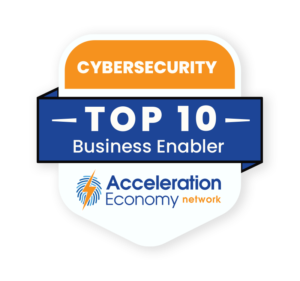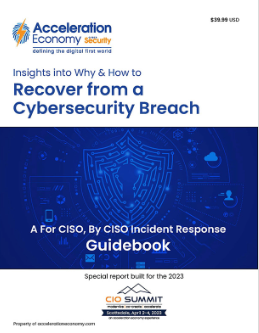Low code continues to be a driving force for new application development within many organizations. By focusing on user interface-driven design and reusable templates, low-code/no-code platforms shorten development timelines. And by giving engineering power to business users, low-code empowers more citizen developers to create robust applications and internal workflows. Low-code platforms can accelerate development for professional programmers, too, generating boilerplate code and freeing them up to focus on more complex development functions.
At the same time, more and more businesses are embracing hybrid and multi-cloud architectures. In fact, 82% of organizations have already adopted hybrid cloud, according to the Cisco 2022 Global Hybrid Cloud Trends Report. The same study found 92% use more than two public cloud providers.
Very often, the move to the cloud is not made in one motion but piecemeal, from department to department, to support various technology stacks. Or, multi-cloud may be enacted strategically to implement best-of-breed technologies or realize cost savings. Regardless of the reason, it’s clear that multi-cloud strategies are here to stay. But what’s not as clear is how information technology (IT) is expected to manage the complexities inherent in multi-cloud deployments.
Low-code solutions will arguably be the path toward enabling consistent control over multiple clouds simultaneously. Now entering the market are new low-code solutions that help manage infrastructure across various clouds from a centralized location. Low code could also abstract the complexities of working with cloud-native technologies that interface with multiple clouds and backend storage types. Below, we’ll examine the advantages of low-code and multi-cloud and consider the role low-code applications may have in reshaping an organization’s execution of a multi-cloud strategy.
Advantages of Low-Code Applications
There are many advantages of utilizing low-code, making it a good fit to accelerate a multi-cloud strategy. For one, low code creates the ability to quickly spin up applications at a lower cost, removing friction from experimentation and mockups. This could help create applications for various environments and platforms more seamlessly. Furthermore, low code reduces the barrier to implementation, enabling workers with a broader scope of skill levels to engage with application design and development.
A streamlined development process with less friction can reduce time to market for innovation products or features. In addition to the added agility, low code could enable increased flexibility and portability, which is paramount for today’s composable enterprises that are increasingly built upon an assortment of niche reusable microservices.
A low-code development framework can abstract away underlying libraries and software-as-a-service (SaaS) functions, easing the integration of different technologies. Furthermore, outsourcing maintenance with these integrations, as well as deployment processes and application lifecycles, could lower the total maintenance burden for new software.
Advantages of Multi-Cloud Strategies
Similarly, there are many reasons why organizations have opted for a multi-cloud strategy in recent years. First and foremost, adopting multiple clouds can overcome potential vendor lock-in. By working with various service providers, organizations empower individual teams to decide where to place applications and data. This can enhance performance by customizing computing with fit-for-purpose clouds, resulting in greater scalability and flexibility for the business.
There are now many mature cloud service providers to choose from today including AWS, Google Cloud Platform (GCP), Azure, Oracle Cloud Infrastructure (OCI), IBM Cloud, and others. Leveraging more than one of these clouds should increase the integrity and availability of data. By distributing workloads with various cloud service providers, organizations can increase redundancy and resilience, improving their disaster recovery posture. Geographically speaking, utilizing multiple clouds may also be necessary to enable control and compliance with local data privacy restrictions.
Which companies are the most important vendors in cybersecurity? Click here to see the Acceleration Economy Top 10 Cybersecurity Shortlist, as selected by our expert team of practitioner analysts.
Yet, for all its benefits, there are potential drawbacks to a multi-cloud strategy. For one, each cloud operates differently, meaning there are inconsistencies between clouds. Fractured know-how throughout an organization could result in hodgepodge deployment and maintenance procedures. Without the proper multi-cloud management plan, the widened surface area can increase the risk that cloud-native threats pose to an organization.
Low Code Supports Multi-Cloud Governance, Automation
Low code is one solution that could address gaps in a multi-cloud strategy. Decoupling the development layer from the cloud host could help consolidate fractured cultural knowledge and enable multi-cloud orchestration. Low-code solutions that ease policy creation and management across clouds could improve access control and data governance in a consistent manner across all cloud environments. This would help manage the security and privacy implications of spanning multiple clouds.
Now that infrastructure is so dispersed, there is much room for new abstractions to automate things like cloud deployment processes and configuration management. One such technology is developed by Cycle (which refers to its solution as a low-ops infrastructure automation layer). We’re also witnessing the rising use of Kubernetes to orchestrate application rollout and scalability across multiple clouds. Yet, deploying Kubernetes over numerous cloud service providers is sure to incur added complexity. At the same time, platform engineering is emerging as a discipline to centralize self-service capabilities for engineers. All these trends underline the need for streamlined methods for managing multi-cloud operations.
Supporting Tomorrow’s Multi-Cloud Strategy
Low code will surely play a role in the future of evolving coding practices and multi-cloud adoption. For reference, Gartner predicts that by 2024, 75% of large enterprises will be using at least four low-code development tools. Evidently, the low-code revolution is here to stay, but organizations should consider governing the tooling acquisition process in order to reduce bloat and technical duplication.
Of course, it should be noted that low code has its ceiling. While low-code platforms extoll usability, they sacrifice deep customization. These solutions can be a boon to aid subject matter experts in automating internal processes and workflows, but they are not always a great fit for technology providers or those with the expertise to construct bespoke platforms.
Looking to the future, artificial intelligence (AI) is also set to play an essential role in codeless approaches to multi-cloud management. While it’s at a relatively nascent stage, AI-based code generation may eventually be applied to stitch together common deployment pipelines and enforce policies across clouds. Increased automation will also be necessary to continuously scan for vulnerabilities and to enable anti-fragile systems that respond well under high traffic loads and unforeseen incidents.
Want more cybersecurity insights? Visit the Cybersecurity channel:










